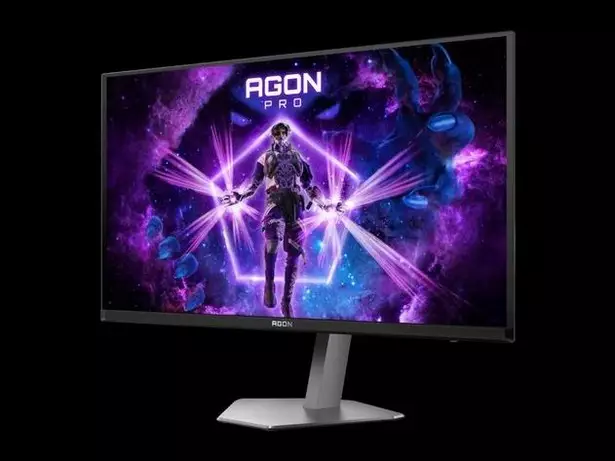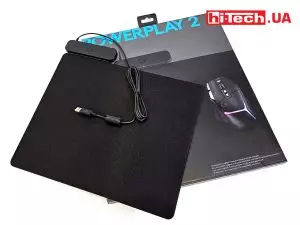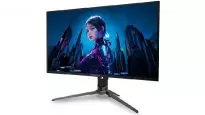The AOC AGON Pro AG276QZD2 gaming monitor is equipped with a Samsung QD-OLED matrix with a 2K resolution and a frequency of 240 Hz
06.08.24
AOC has introduced a new gaming monitor with a Samsung matrix. The model, named AOC AGON Pro AG276QZD2, is equipped with a QD-OLED panel with a diagonal of 26.5 inches. The display has a resolution of 2560×1440 pixels and supports a refresh rate of up to 240 Hz, providing a response time of 0.03 ms. The monitor is also certified according to the VESA DisplayHDR True Black 400 standard and covers 99.1% of the DCI-P3 color space.
The monitor is equipped with HDMI 2.0, DisplayPort 1.4, USB Type-A 3.2 Gen 1 ports and a 3.5 mm headphone jack. Built-in speakers with a power of 5 W complement the functionality of the device. The AOC AGON Pro AG276QZD2 is now available for purchase in the US for $599.
QD-OLED is a kind of hybrid of organic LEDs with quantum dots. The technology is still new, and little is known about its practical application. The developers promise a lot and speak beautifully, but let’s figure it out for ourselves. In this article, we will talk about the structure of such displays, find out their pros and cons, and also consider the prospects for further development.
Advantages and disadvantages of QD-OLED
From OLED, the new technology inherited deep black color and excellent viewing angles. Gamers will appreciate the impressive response rate of up to 0.1 ms and refresh rate from 120 Hz. Replacing the color filter with quantum dots made it possible to get a high peak brightness that reaches, and according to rumors, even exceeds 1000 threads. High brightness, in turn, provided an excellent implementation of HDR — extended dynamic range. Accurate color reproduction and extended color coverage were also obtained thanks to Quantum Dot. According to the manufacturers, coverage of the DCI-P3 cinematic color space exceeded 100% and amounted to 123%. BT.2020 coverage is more than 90%. Thanks to the perfect black and high brightness, it was possible to achieve a contrast ratio of 1,000,000:1.
Now about the shortcomings. First, it is a limited dimensional grid. Today, the diagonal of TVs based on QD-OLED is 55 or 65 inches. The situation is even sadder with monitors – only 34 inches. However, the technology is young and things can change. The second minus is the unexpected drop in contrast when direct light hits the screen, noted by some reviewers. As a result, the seemingly perfect black turns into a normal IPS gray color. This problem primarily concerns monitors. The most likely reason is the lack of a polarization layer. Another disadvantage is a slight color distortion at the border of two contrasting areas, which may be explained by the triangular arrangement of the subpixels. This minus is very subjective and largely depends on the perception of a specific user.
Don't miss interesting news
Subscribe to our channels and read announcements of high-tech news, tes
Logitech G Powerplay 2 wireless charging pad review

Logitech has great wireless mice, and there’s also the G Powerplay 2 wireless charging mat that will keep them charged right while you’re using them.
Motorola Edge 60 Fusion smartphone with branded Moto AI and IP69 protection will cost $390 artificial intelligence Motorola smartphone
Motorola introduced the first smartphone in the Edge 60 series – Edge 60 Fusion, which became the brand’s first device with an integrated Moto AI system.
Acer Predator X32 X2 and Predator X27U X1 monitors get QD-OLED Acer monitor Predator
The Acer Predator X32 X2 has a 31.5-inch 10-bit screen with a resolution of 3840×2160 pixels, while the Predator X27U X1 is equipped with a 27-inch panel.


